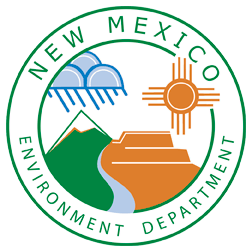Resources for complying with the Lead and Copper Rule Revisions (LCRR)
Lead Service Line Inventory (LSLI) and Replacement Templates and Documents
| Document Title | Document Description |
|---|---|
| Fact Sheet – Lead Service Line Inventory Requirements | Fact sheet to provide a high-level overview of the lead service line inventory requirements |
| Lead Service Line Inventory Spreadsheet | Spreadsheet to be used by community and non-transient, non-community public water systems in documenting their water system’s Lead Service Line Inventories |
| EPA Guidance: Developing and Maintaining a Service Line Inventory: Small Entity Compliance Guide | This guide is designed for owners and operators of small community water systems (CWSs) and non-transient non-community water systems (NTNCWSs). All CWSs and NTNCWSs must develop and maintain an inventory of each service line in their distribution system to comply with the LCRR. Water systems must submit their initial inventories to their State1 by October 16, 2024. Systems that might find this guide useful include those that operate the following: Small towns; Rural water districts; Tribal waters systems; Manufactured housing parks; Homeowners associations; Small private water systems; and Factories, schools, and religious institutions that have their own water supplies. |
| EPA Guidance: Guidance for Developing and Maintaining a Service Line Inventory | The purpose of this document is to guide water systems as they develop and maintain service line inventories and to provide states with needed information for oversight and reporting to EPA. The guidance contained in this document can also position water systems to begin replacing LSLs as soon as possible. Locating LSLs is the first and critical step to replacing them; however, water systems do not need to complete the entire inventory process before designing and implementing their LSLR programs. This guidance covers the lifecycle of the inventory, including inventory creation, material investigations, system reporting, state review, public accessibility of service line information, and service line consumer notification. In addition, the guidance provides best practices, case studies, and templates related to topics such as the classification of unknowns, goosenecks, and galvanized plumbing; best practices for service line material investigations; inventory form and format; inventory accessibility; tools to support inventory development and data tracking; and ways to prioritize service line investigations. |
Lead Service Line Inventory Customer Driven Data
| Document Title | Document Description |
|---|---|
| Fact Sheet – Customer Outreach Packet | Customer and private assistance to Systems is an important component in completing the service line inventory. NMED has created several customer communication templates that Systems can use for outreach to their customers. Systems may provide the three documents outlined below to customers via mail, email, or other methods. |
| Customer Outreach Letter Template | Provides a brief overview of the health effects of lead in drinking water and why customer service line identification is important, contains a customer survey and web links for additional information. The template Word file can be edited to include your system contact information and any additional information you’d like to include. |
| Customer Self-Identify Drinking Water Service Line Survey Template | The survey is a guidance tool for customers to self-assess and verify the material of customer-owned service lines. The survey is then returned to the System. The template should be downloaded either as a Word file or a fill-able PDF. Make sure to edit the document to include how to submit the completed survey and system contact information. |
| Survey guidance-Water Service Line Material Identification | Explains how to locate the drinking water service line and identify the line material. Make sure to include this document with the customer service line survey. |
LCRR School and Childcare Facility Sampling
| Document Title | Document Description |
|---|---|
| Fact Sheet – Developing an LCRR School and Childcare Facility Monitoring list | Community public water systems must create, contact the facilities, and maintain a list of all elementary schools and childcare facilities they serve, to comply with the Lead and Copper Rule Revisions (LCRR). This list will need to be compiled by October 16, 2024, and submitted to NMED Drinking Water Bureau, in accordance with Code of Federal Regulations (CFR) §141.92(a)(1). |
| Fact Sheet – LCRR Monitoring for lead in schools and childcare facilities | The LCRR requires that all community water systems conduct directed public education and lead monitoring at the schools and childcare facilities they serve if those schools or childcare facilities were constructed prior to January 1, 2014 or the date the State adopted standards that meet the definition of lead free in accordance with Section 1417 of the Safe Drinking Water Act. |
| Early Childhood Education & Care Department List of Licensed Childcare Facilities (Excel List) | List of licensed Childcare facilities in New Mexico, provided by the Early Childhood Education & Care Department (ECECD). Additional information from ECECD can be found on their website: https://www.nmececd.org/child-care-assistance/ |
Available Funding for LCRR Projects
| Document Title | Document Description |
|---|---|
| Federal Funds for Drinking Water Infrastructure Fact sheet | The IIJA, also referred to as the Bipartisan Infrastructure Law (BIL), provides five years of infrastructure funding for New Mexico Public Water Systems. This funding will be delivered through the Drinking Water State Revolving Fund (DWSRF), which is jointly administered by the New Mexico Finance Authority (NMFA) and the New Mexico Environment Department (NMED). |
| DWB Infrastructure Funding Information | Webpage to provide comprehensive information about infrastructure and project funding resources |
| DWSRF and BIL Funding Pre-application | Pre-application for Drinking Water State Revolving Fund (DWSRF) and Bipartisan Infrastructure Law (BIL) funding. Submitting a pre-application is not binding. Submitting a pre-application provides DWB with basic information that will help provide infrastructure funding assistance to interested public water systems. |
LCRR Public Notice Template Documents
| Document Title | Document Description |
|---|---|
| Fact Sheet – Requirements for Tier 1 Public Notice Following a Lead Action Level Exceedance | This fact sheet provides an overview of the Lead and Copper Rule Revisions (LCRR) requirements following a lead ALE for timing, content, and delivery of Tier 1 PN and updated requirements for PE materials. You must also continue to provide PE materials to customers within 60 days after the end of the monitoring period as required by the Lead and Copper Rule (LCR). Starting October 16, 2024, you must use the updated lead health effects language in your PE materials. |
| Tier 1 Lead Public Notice Lead Instructions and Template | Beginning October 16, 2024, an exceedance of the action level for lead requires Tier 1 public notification. This applies to any community water system or non-transient non-community water system. You must provide public notice to persons served as soon as practical but no more than 24 hours after learning of the lead Action Level Exceedance (ALE). During this time, you must also provide a copy of the notice to EPA and your State. You must provide the notice that can reach all persons using one or more of the following methods to deliver the notice to consumers: · Broadcast Media, such as radio and television. · Hand delivery. · Posting in conspicuous locations throughout your water service area. · Another method approved in writing by your State. |
| Lead Tier 1 Public Notice Certification Template | The public water system, within 10 days of completing the public notification requirements for the initial public notice and any repeat notices, must submit to the primary agency a certification that it has fully complied with the public notification regulations. |
| Consumer Notice of Tap Water Result | This form is used to notify individuals of their lead sampling results at the location where the drinking water sample was collected. Under federal regulations (40 CFR § 141.85), public water systems are required to deliver the consumer notice within 3 business days of receiving the lead sample results from the laboratory. The notice must include the actual lead result, health effects information, and steps the consumer can take to reduce exposure. A copy of the completed notice, along with the Lead Consumer Notice Certification Form, must be submitted to the New Mexico Environment Department within 90 days after the end of the monitoring period. |
| Fact Sheet – Public Notification of Known or Potential Service Line Containing Lead | Under the 2021 Lead and Copper Rule Revisions (LCRR), water systems must provide people with specific information about their service lines. This requirement begins on October 16, 2024. Since this is a new regulatory requirement, EPA recommends water systems plan ahead to ensure readiness to comply with the new requirements. This fact sheet provides an overview of the EPA’s requirements for content, delivery, and timing of this notification. |
| Confirmed Lead Service Line Public Notice Template | To be used when a public water system confirms the presence of lead service lines. |
| Confirmed Galvanized Service Line Requiring Replacement Public Notice Template | To be used when a public water system confirms the presence of galvanized lead service lines that require replacement. |
| Unknown Service line Material Public Notice Template | To be used when a public water system contains service lines with unknown materials. |
SWIFT Submittals Portal
| Resource | Document Title | Document Description |
|---|---|---|
 | SWIFT Submittals – Quick Tips | The SWIFT Submittals application provides water systems with the tools to maintain service line information, submit Lead Service Line Inventories (LSLIs) and other required information to the state, and stay in compliance with Lead and Copper regulatory requirements. Quick tips to help the submittal processes run smoothly have been compiled in this factsheet. |
 | SWIFT Submittals Benefits | This document provides an overview of the benefits that water systems will get by using the SWIFT Submittals Portal for their lead service line inventories. |
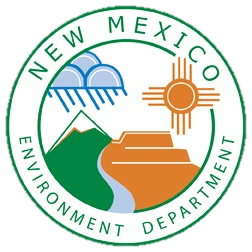 | SWIFT Submittals Video Tutorial | To help water systems use SWIFT Submittals, NMED has developed a tutorial video that explains the registration process and how to use the application. |
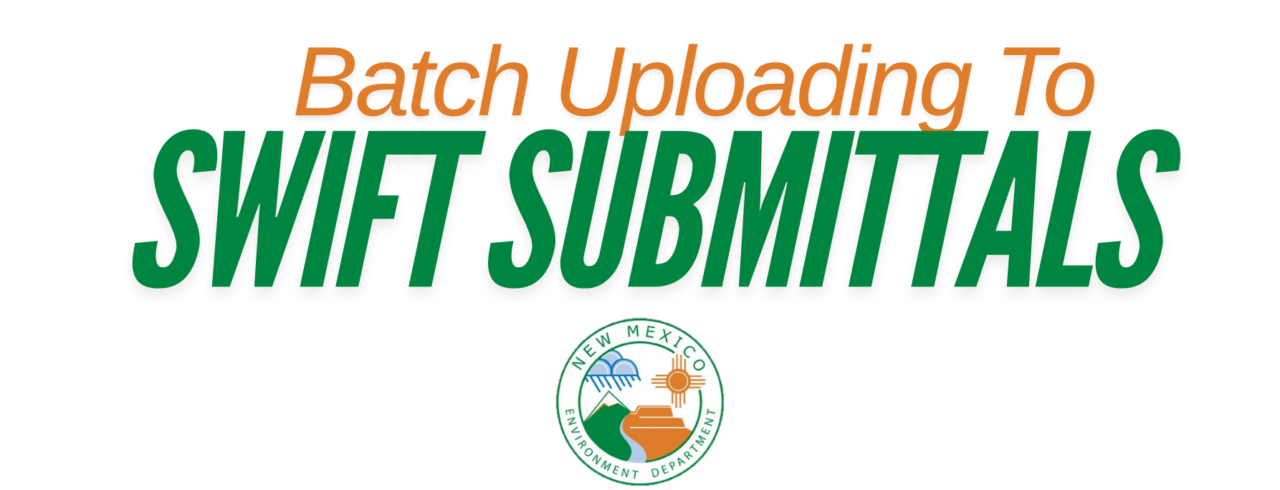 | SWIFT Submittals – Batch Uploads Video Tutorial | Video clip of the SWIFT Submittals, batch uploading process. |
Other LCRR Resources
| Resource | Resource Description |
|---|---|
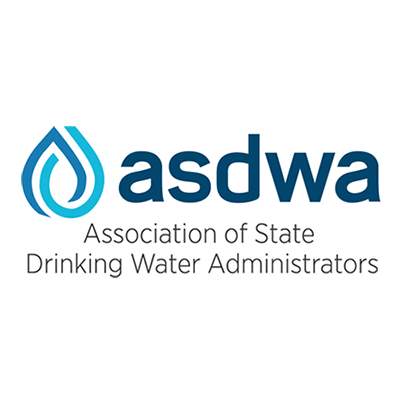 | Association of State Drinking Water Administrators (ASDWA) Lead Service Line Symposium was held as a series of eight 90-minute online sessions each Wednesday throughout February 2022. |
| DWB LCRR Letter to Public Water Systems | February 2, 2023 letter to New Mexico public water systems impacted by the LCRR. |
| EPA LCRR Fact Sheet | December 2020 LCRR Fact sheet published by EPA. |
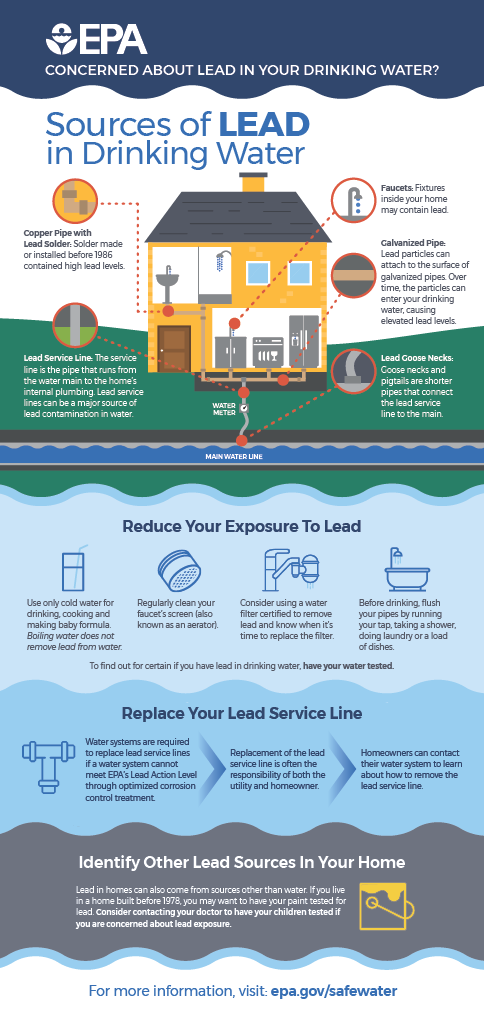 | EPA’s infographic regarding lead in drinking water. Learn basic information about sources of lead in drinking water, suggestions for reducing exposure and information about replacing lead service lines. |
| EPA: Engaging with the Community to Identify and Replace Lead Service Lines | EPA’s Protect Your Tap: A Quick Check for Lead is an online step-by-step guide to help people identify lead pipes, called lead service lines, in their homes. It also provides tips on actions to reduce lead exposure in drinking water, information on certified laboratories for water testing, and resources to learn more. Try this Interactive Guide that can assist homeowners in identifying likely LSLs in the home. |
| EPA: Lead Service Line Identification and Replacement Webinars | EPA Office of Water hosted a series of quarterly webinars highlighting challenges and successes in lead service line identification and replacement. The webinar series showcased how states and public water systems have successfully identified lead service lines and shared that information with the public to raise awareness about the presence of lead service lines in their communities. |
Return to Lead and Copper Rule Revision
